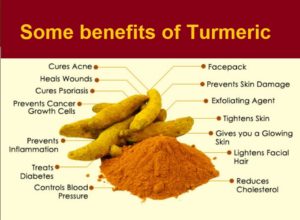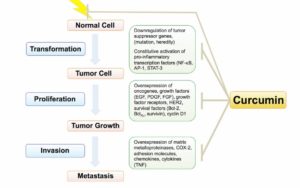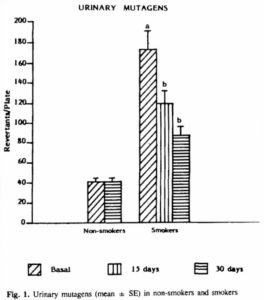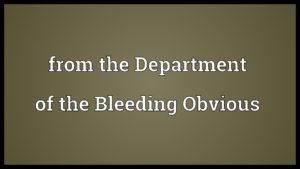
There are lots of claims made about the health benefits of curcumin (a chemical ingredient in turmeric), but is it all hype or is there facts-based evidence that supports its power to prevent/treat a whole range of diseases. We’ll look at some of the strong evidence for its effectiveness with three conditions: prediabetes, type 2 diabetes, and cancer?
Prediabetes & Turmeric
A 2012 study 1 aimed to assess the efficacy of curcumin in delaying the development of type 2 diabetes in the prediabetic population.
Study method
This was a randomised, double-blinded, placebo- controlled trial with 240 prediabetic individuals.
Subjects were randomly assigned to receive either curcumin or placebo capsules for a period of 9 months.
In order to assess the progression of type 2 diabetes mellitus (T2DM) in both groups, changes in relevant factors (including the following) were measured and compared at baseline and at 3-, 6-, and 9-month visits during the course of intervention:
- β-cell function2
- C-peptide function 3
- proinsulin/insulin levels 4
- insulin resistance 5
- adiponectin 6 7 (an anti-inflammatory cytokine 8 )
Study results
After 9 months of treatment:
- 16.4% of subjects in the placebo group were diagnosed with T2DM
- zero subjects in the curcumin-treated group were diagnosed with T2DM
In addition:
- β-cell function improved in the curcumin-treated group compared with the placebo group
- improved C-peptide levels in the curcumin-treated group compared with the placebo group (low levels of C-peptide are found in people at risk of type 1 as well as type 2 diabetes 9 )
- less insulin resistance (i.e. a lower level of HOMA-IR 10 ) in the curcumin-treated group compared with the placebo group
- higher adiponectin levels in the curcumin-treated group compared with the placebo group
Study conclusions
“A 9-month curcumin intervention in a prediabetic population significantly lowered the number of prediabetic individuals who eventually developed T2DM. In addition, the curcumin treatment appeared to improve overall function of β-cells, with very minor adverse effects. Therefore, this study demonstrated that the curcumin intervention in a prediabetic population may be beneficial.”
Diabetes & Turmeric
Study #1
A February 2013 study 11 pointed out that curcumin has anti-inflammatory activity, which is “…mediated through an up-regulation of adiponectin and reduction of leptin”. They also mention that consumption of curcumin has already been shown to prevent some deteriorative conditions caused by inflammation, such as ulcerative colitis, rheumatoid arthritis and esophagitis, etc.
Since inflammation-associated cardiovascular conditions (such as atherosclerosis) are common in diabetes patients, the researchers wanted to look at the anti-inflammation effect of curcumin to see if it might be beneficial in preventing such conditions in diabetics.
Study #1 method
A 6-month randomised, double-blinded and placebo-controlled clinical trial looked at the effects of curcumin on these risk factors for atherosclerosis in two groups of subjects diagnosed with type 2 diabetes – one treated with curcumin and the other with a placebo.
Study #1 results
Curcumin intervention significantly reduced pulse wave velocity 12 13 , increased level of serum adiponectin ,and decreased level of leptin 14 15 .
These results are associated with reduced levels of:
- insulin resistance
- triglycerides
- uric acid 16
- visceral fat
- total body fat
Study #1 conclusion
This 6-month curcumin intervention in type 2 diabetic population: “…lowered the atherogenic risks. In addition, the extract helped to improve relevant metabolic profiles in this high-risk population.”
Study #2
A September 2013 study 17 was undertaken by researchers who had already found 18 19 that curcuminoids 20 decreased blood glucose and improved insulin resistance by reducing serum free fatty acids (FFAs) and increasing fatty acid oxidation in skeletal muscle of diabetic rats.
Study #2 aims
This study was to investigate whether curcuminoids have beneficial effects on human type 2 diabetic patients, and also to discover what the possible mechanisms might be.
Study #2 method
100 overweight/obese type 2 diabetic patients were randomly assigned to consume either curcumin or a placebo for a 3-month period .
The following were measured before and after the trial:
Study #2 results
Supplementation with curcumin had the following positive effects:
- significantly decreased fasting blood glucose
- significantly decreased insulin resistance index (HOMA-IR)
- significantly decreased serum total FFAs
- significantly decreased serum triglycerides
- and significantly increased LPL activity
Study #2 conclusion
“These findings suggest a glucose-lowering effect of curcuminoids in type 2 diabetes, which is partially due to decrease in serum FFAs, which may result from promoting fatty acid oxidation and utilization.”
Cancer & Turmeric
For decades, numerous studies 26 27 28 29 30 31 have highlighted the anti-carcinogenic potential of curcumin, not only for cancer-prevention, but also for treatment and reversal of the three stages of cancer development (initiation, promotion and progression) 32 . One such study 33 even pointed out that curcumin is able to satisfy all three functions of any chemopreventive agent: namely, it simultaneously acts as antiproliferant, antioxidant, and carcinogen-blockers, hence why Dr Greger considers 34 that it helps “…to block every stage of cancer transformation, proliferation, and invasion.”

But we’ll just look at one relatively early study to demonstrate just how effective turmeric is in fighting cancer.
This 1992 study 35 looked at cancer markers in tobacco smokers.
Study method
They compared two groups: non-smokers and chronic smokers. Each were given the same doses of 1.5 g/day of curcumin for a period of 30 days. They then had them urinate on some bacteria to see what number of DNA mutations arose. This might sound an odd method, but it is a relatively easy way of measuring such mutations.
Study results

You’d expect the number of mutagens to be considerably higher in smokers than in non-smokers, since they have all that carcinogenic-laden smoke filling their lungs and then being carried in their bloodstream to every cell in their body. Some of these mutagens will end up being urinated out.
So, it’s no surprise that the number of urinary mutagens in the case of the non-smokers remained pretty constant from the initiation until the end of the trial – as can be seen from the left-hand non-smokers’ columns which remain at the same level. They didn’t have so many nasty chemicals flowing around their body at the start of the trial.
However, there was a significant reduction in the urinary excretion of mutagens in smokers during the trial due to the intake of turmeric.
At day 15, you can see that the number of mutagens had dropped from the 190-170 region down to the 130-120 region. And, after 30 days, they dropped from the 130-120 region to the 100-90 region.
And the researchers didn’t use any form of super concentrated curcumin supplement. Rather, it was just plain old turmeric, like you’d buy at the shop.
And the amount they were using? Less than a teaspoon a day.
Study conclusion
“These results indicate that dietary turmeric is an effective anti-mutagen and it may be useful in chemoprevention.”
Joe’s comment on the study
This simple trial is sufficient on its own to indicate that dietary turmeric is an effective antimutagen. Of course, the best antimutagen is not to smoke in the first place and eat an optimally-healthy diet including daily intake of turmeric. But it is a pretty convincing study where such tiny amounts of a natural spice can so dramatically reduce the DNA-damaging power of tobacco – in just one month.
Best way to get your daily turmeric fix
In his book ‘How Not To Die‘36 recommends that we have quarter of a teaspoon of dried turmeric powder (or quarter of an inch of fresh turmeric root) each day as part of our Daily Dozen 37 .
But, before you do that, please note that it’s far, far more effective if you combine your quarter teaspoon of turmeric with quarter of a teaspoon of ground black pepper. Dr Greger says 38 : “If you consume the same amount of curcumin [quarter of a teaspoon] but add a quarter teaspoon of black pepper, the level of curcumin in your blood shoots up by 2,000 percent.” This is supported by strong research data 39 .
The following is a simple recipe I follow to ensure I get my daily anti-disease fix:
Ingredients
- half a cup of tomato juice (ideally unsalted and organic)
- quarter teaspoon of turmeric powder
- quarter teaspoon of black pepper
- dash of hot chilli sauce (optional, of course!)
Method
- mix all the above together in a cup and microwave for 30-60 second (or heat in a pan) until it’s at the temperature you want
- give mixture a final stir before drinking
Final thoughts
The question that any thoughtful person should perhaps be asking themselves at this stage is: “How come the medical profession haven’t been telling the public about this cheap and side-effect-free cancer treatment?” I will leave you to ponder that one – but I think you’ll find the answer lies, to a large extent, in the lack of patentability of this humble spice.
Finally, whereas the above powerful study data is both fascinating and useful to know, it’s really important to emphasise that tinkering with one element of the diet is far from the ideal solution and represents a more reductionist than wholistic approach 40 . If you take your daily turmeric just so that you can continue with unhealthy dietary and lifestyle habits, then you are doing yourself a disfavour. By far the best way to use any health-providing dietary component is as part of a complete diet of optimally-healthy foods – that is, a non-SOS WFPBD. No surprise there, then…

If you want more about the range of diseases that turmeric has been shown to be effective in preventing and treating, Dr Greger provides an article on turmeric 41 which has links to 43 videos on the subject.
References
- Curcumin extract for prevention of type 2 diabetes. Chuengsamarn S, Rattanamongkolgul S, Luechapudiporn R, Phisalaphong C, Jirawatnotai S. Diabetes Care. 2012 Nov;35(11):2121-7. doi: 10.2337/dc12-0116. Epub 2012 Jul 6. [↩]
- β-cell or beta cell function: The primary function of a beta cell is to store and release insulin. [↩]
- C-peptide function: A C-peptide test is used to monitor and treat diabetes. It shows how well your body makes insulin, which moves sugar (or “glucose”) from your blood into your cells. [↩]
- Proinsulin: A proinsulin blood blood test measures proinsulin, a building block for insulin. To turn food into energy, your pancreas makes proinsulin. Proinsulin, in turn, is made into insulin and the above-mentioned protein C-peptide. Measuring proinsulin in your blood can help measure your risk of developing type 1 or type 2 diabetes. [↩]
- Insulin resistance (IR): This is where cells fail to respond normally to the hormone insulin. There may well be sufficient or more than sufficient insulin flooding the bloodstream, but if the cells cannot absorb it, then it cannot do its job of removing glucose from the blood. [↩]
- Adiponectin: Reduced levels of this hormone are found in obese and diabetic individuals. Several clinical studies have shown that low production of adiponectin correlates with the development of insulin resistance and type 2 diabetes. [↩]
- World J Gastroenterol. 2006 Mar 21;12(11):1747-51. Roles of adipocyte derived hormone adiponectin and resistin in insulin resistance of type 2 diabetes. Lu HL, Wang HW, Wen Y, Zhang MX, Lin HH. [↩]
- Cytokines: Cytokines are small secreted proteins released by cells. They have a specific effect on cellular interactions and communication. [↩]
- Diabet Med. Author manuscript; available in PMC 2016 Oct 1.
Low levels of C-peptide have clinical significance for established Type 1 diabetes. W. M. Kuhtreiber, S. L. L. Washer, E. Hsu, M. Zhao,1 P. Reinhold, III, D. Burger, H. Zheng, and D. L. Faustman [↩] - HOMA-IR: The homeostatic model assessment is a method used to quantify insulin resistance and beta-cell function. It was first described under the name HOMA by Matthews et al. in 1985. [↩]
- Reduction of atherogenic risk in patients with type 2 diabetes by curcuminoid extract: a randomized controlled trial. Chuengsamarn S, Rattanamongkolgul S, Phonrat B, Tungtrongchitr R, Jirawatnotai S. J Nutr Biochem. 2014 Feb;25(2):144-50. doi: 10.1016/j.jnutbio.2013.09.013. Epub 2013 Nov 6. [↩]
- Pulse wave velocity: Pulse wave velocity is the velocity at which the arterial pulse propagates through the circulatory system. PWV is used clinically as a measure of arterial stiffness. Higher wave velocity is associated with ageing and stiffening of the arteries. [↩]
- International Journal of Hypertension. Volume 2014, Article ID 653239, 7 pages. Reference Values of Pulse Wave Velocity in Healthy People from an Urban and Rural Argentinean Population. Alejandro Díaz, Cintia Galli, Matías Tringler, Agustín Ramírez, and Edmundo Ignacio Cabrera Fischer. [↩]
- Leptin: In leptin resistance, your leptin is high, which means you’re fat, but your brain can’t see it. In other words, your brain is starved, while your body is obese. And that’s what obesity is: it’s brain starvation. [↩]
- Healthline: Leptin [↩]
- Gout, Uric Acid, Urea, Purines & Plant-Based Diets [↩]
- Mol Nutr Food Res. 2013 Sep;57(9):1569-77. doi: 10.1002/mnfr.201200131. Epub 2012 Aug 29. Curcuminoids exert glucose-lowering effect in type 2 diabetes by decreasing serum free fatty acids: a double-blind, placebo-controlled trial. Na LX, Li Y, Pan HZ, Zhou XL, Sun DJ, Meng M, Li XX, Sun CH. [↩]
- Curcumin, a potential inhibitor of up-regulation of TNF-alpha and IL-6 induced by palmitate in 3T3-L1 adipocytes through NF-kappaB and JNK pathway. Wang SL, Li Y, Wen Y, Chen YF, Na LX, Li ST, Sun CH. Biomed Environ Sci. 2009 Feb;22(1):32-9. doi: 10.1016/S0895-3988(09)60019-2. [↩]
- Curcumin improves insulin resistance in skeletal muscle of rats. Na LX, Zhang YL, Li Y, Liu LY, Li R, Kong T, Sun CH. Nutr Metab Cardiovasc Dis. 2011 Jul;21(7):526-33. doi: 10.1016/j.numecd.2009.11.009. Epub 2010 Mar 15. PMID: 20227862. [↩]
- Curcuminoid definition. [↩]
- HbA1c: A high HbA1c means you have too much sugar in your blood. This means you’re more likely to develop diabetes complications, like serious problems with your eyes and feet. [↩]
- Diabetes UK: What is HbA1c? [↩]
- Serum fasting glucose: People with diabetes have higher levels of blood glucose than people who do not have diabetes [↩]
- Diabetes.co.uk: Fasting Blood Sugar Levels))
- FFAs ((Free fatty acids: These are by-products of the metabolism of fat in adipose tissues and cause both insulin resistance and inflammation in the major insulin target tissues. [↩]
- Endocrinol Metab Clin North Am. Author manuscript; available in PMC 2009 Sep 1. Obesity and Free Fatty Acids (FFA). Guenther Boden, M.D.))
- lipids
- lipoprotein lipase (LPL) ((Lipoprotein lipase (LPL): Lipoprotein lipase is an enzyme that is important for the transfer of triglycerides from your blood lipoproteins into your tissues. Insulin stimulates lipoprotein lipase production, especially in your fatty tissues. [↩]
- M. Nagabhushan, A. J. Amonkar, S. V. Bhide. In vitro antimutagenicity of curcumin against environmental mutagens. Food Chem. Toxicol. 1987 25(7):545 – 547. [↩]
- J Am Coll Nutr. 1992 Apr;11(2):192-8. Curcumin as an inhibitor of cancer. Nagabhushan M1, Bhide SV. [↩]
- Ann N Y Acad Sci. 1995 Sep 30;768:201-4. Chemoprevention of colon cancer by dietary curcumin. Rao CV, Rivenson A, Simi B, Reddy BS. [↩]
- Cancer Lett. 1997 Mar 19;114(1-2):11-7. Experimental evidence for cancer preventive elements in foods. Wargovich MJ. [↩]
- Cancer Lett. 1999 Jul 1;141(1-2):159-65. Anti-metastatic activity of curcumin and catechin. Menon LG1, Kuttan R, Kuttan G. [↩]
- Nutr Hosp. 2009 May-Jun;24(3):273-81. Plant-derived health: the effects of turmeric and curcuminoids. Bengmark S, Mesa MD, Gil A. [↩]
- See The Three Phases of Cancer in Casein in Dairy = Cancer in Humans? [↩]
- W. Park, A. R. M. R. Amin, Z. G. Chen, D. M. Shin. New perspectives of curcumin in cancer prevention. Cancer Prev Res (Phila) 2013 6(5):387 – 400. [↩]
- Carcinogen-Blocking Effects of Turmeric. Michael Greger M.D. FACLM March 14th, 2014 Volume 17. [↩]
- K. Polasa, T. C. Raghuram, T. P. Krishna, K. Krishnaswamy. Effect of turmeric on urinary mutagens in smokers. Mutagenesis 1992 7(2):107 – 109. [↩]
- Greger, Michael; Stone, Gene. How Not To Die: Discover the foods scientifically proven to prevent and reverse disease (Air Side Edt) (p. 352). Pan Macmillan. Kindle Edition. [↩]
- Dr. Greger’s Daily Dozen Checklist. Michael Greger M.D. FACLM September 11th, 2017 Volume 38. [↩]
- Greger, Michael; Stone, Gene. How Not To Die: Discover the foods scientifically proven to prevent and reverse disease (Air Side Edt) (p. 353). Pan Macmillan. Kindle Edition. [↩]
- Shoba G, Joy D, Joseph T, Majeed M, Rajendran R, Srinivas PS. Influence of piperine on the pharmacokinetics of curcumin in animals and human volunteers. Planta Med. 1998;64( 4): 353– 6. [↩]
- Wholism vs Reductionism – Not Just a War of Words [↩]
- Dr Michael Greger: Turmeric article with video links [↩]